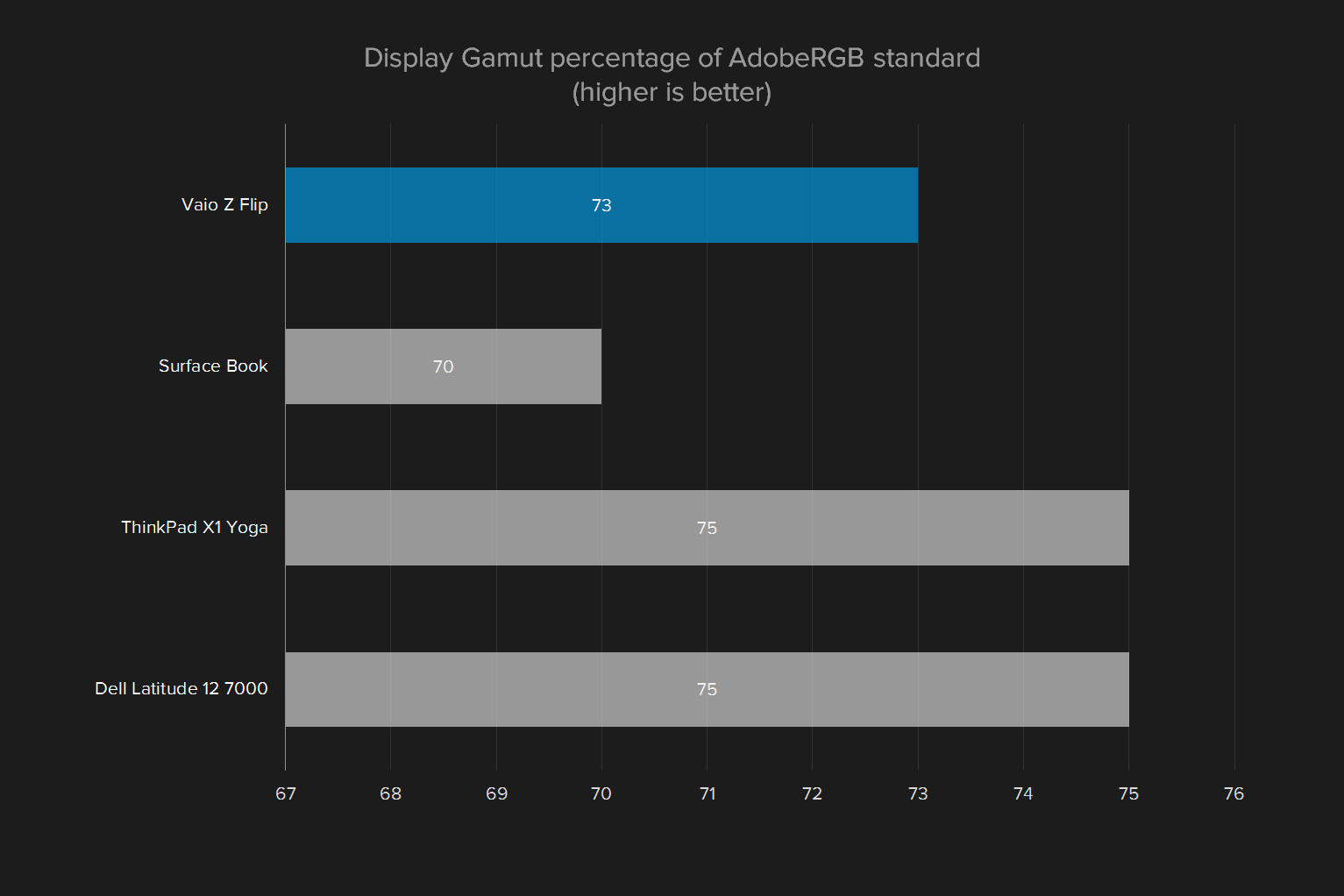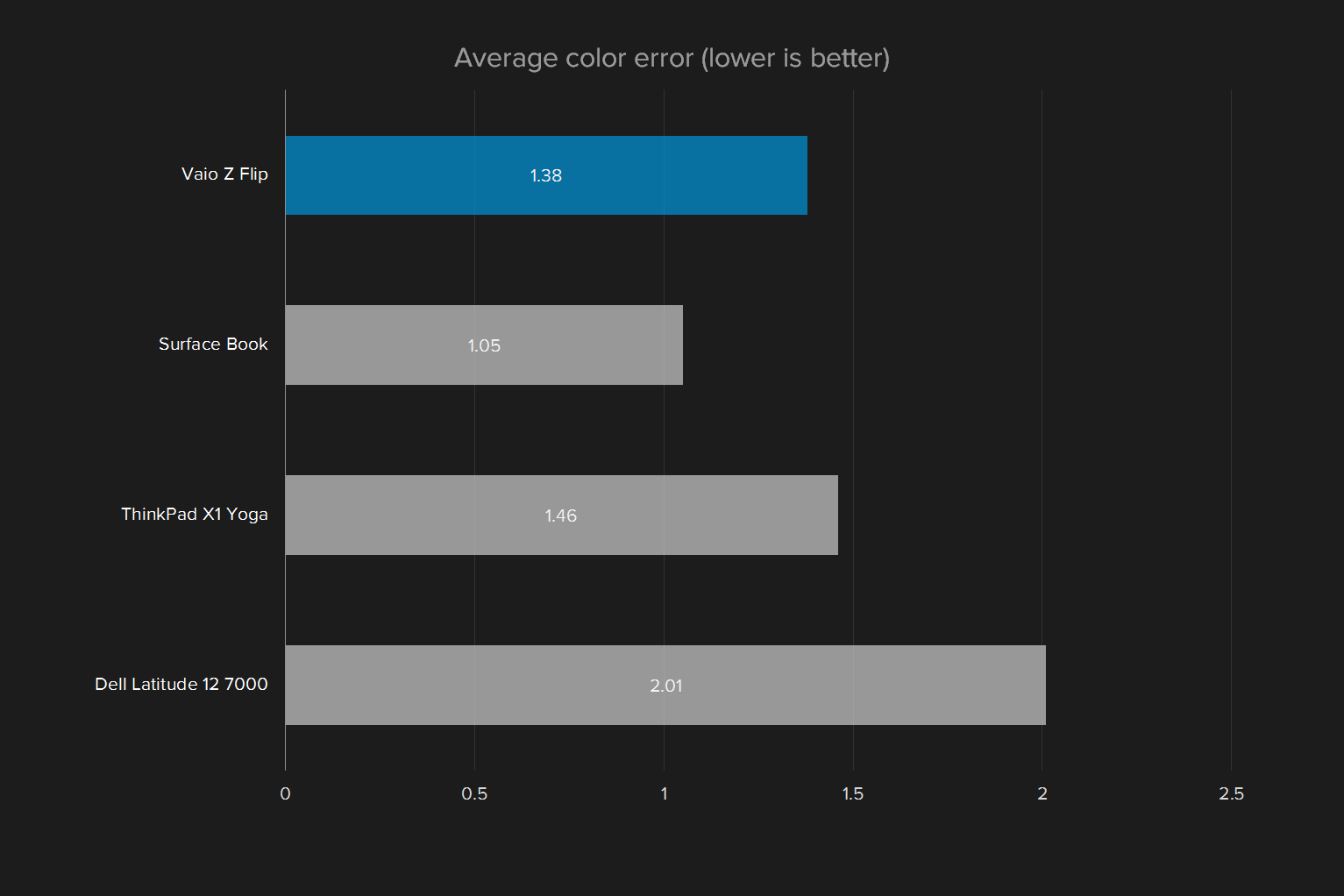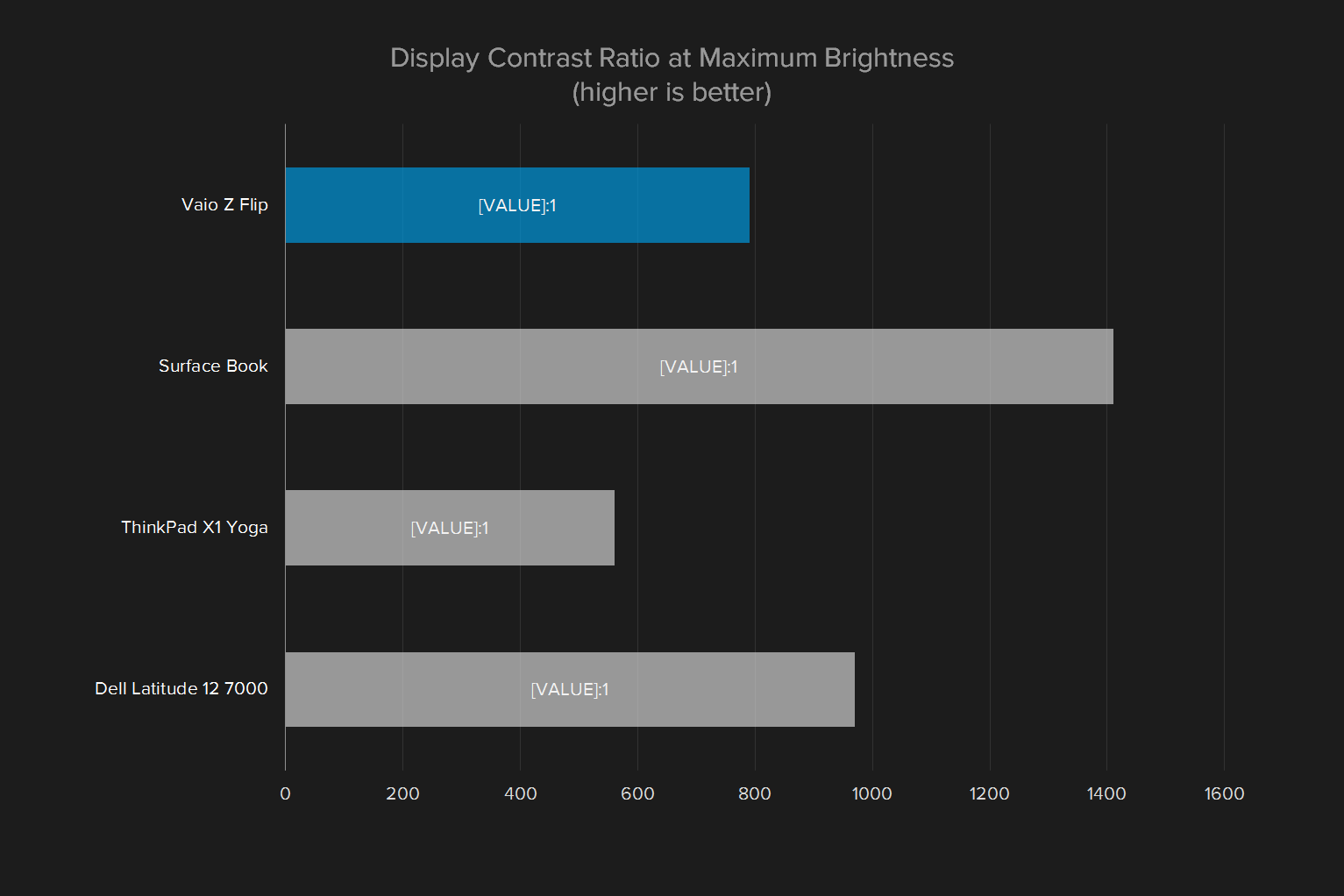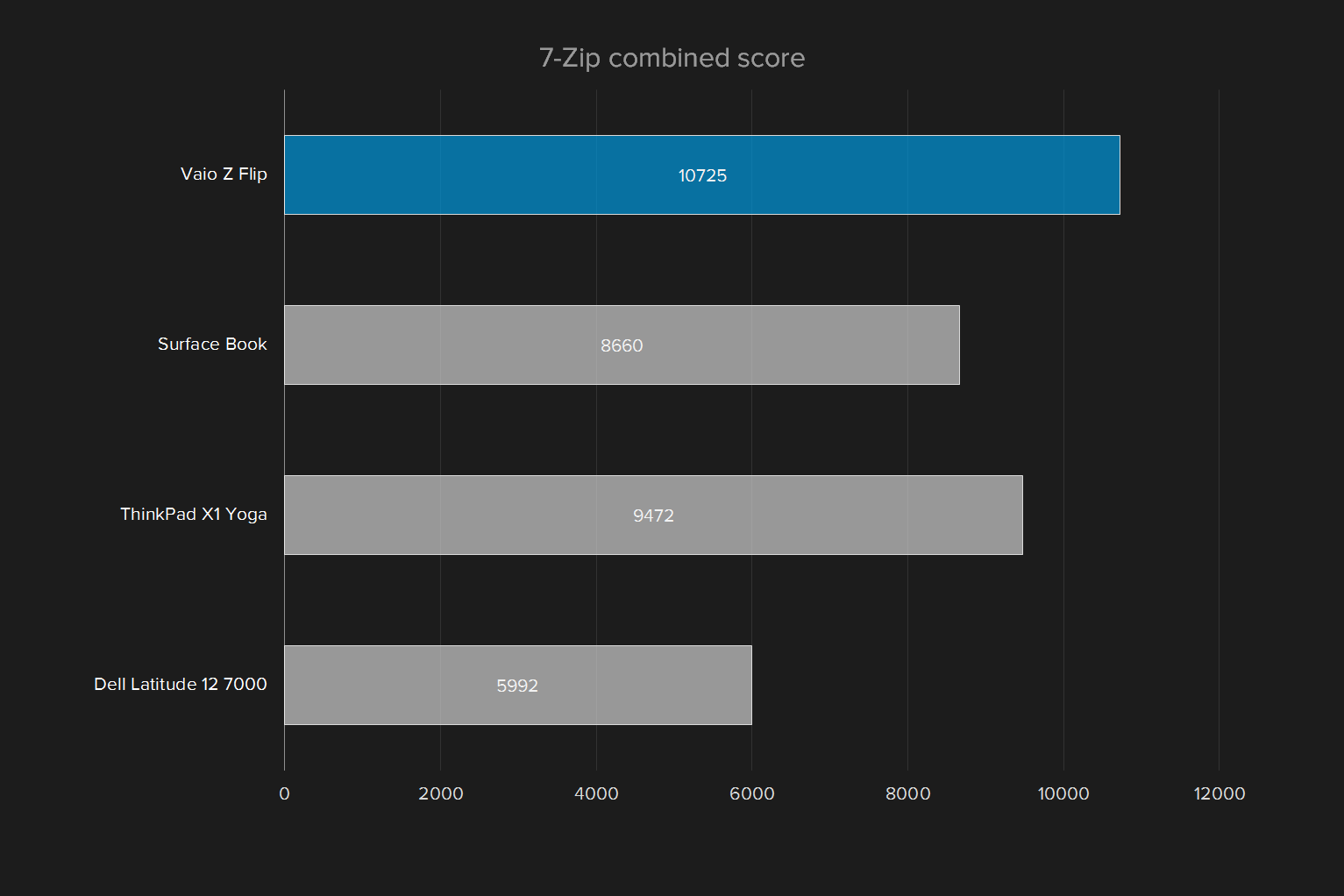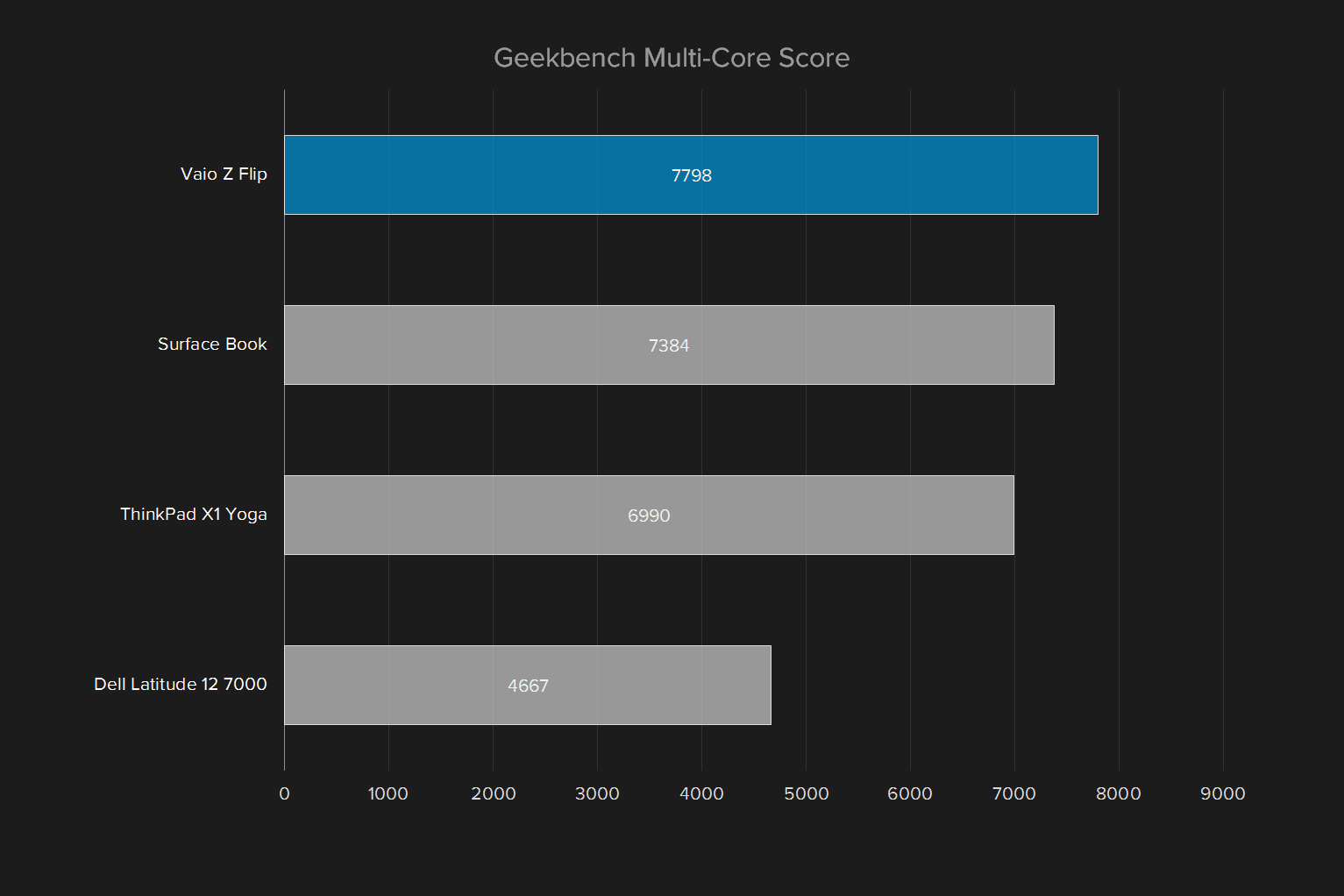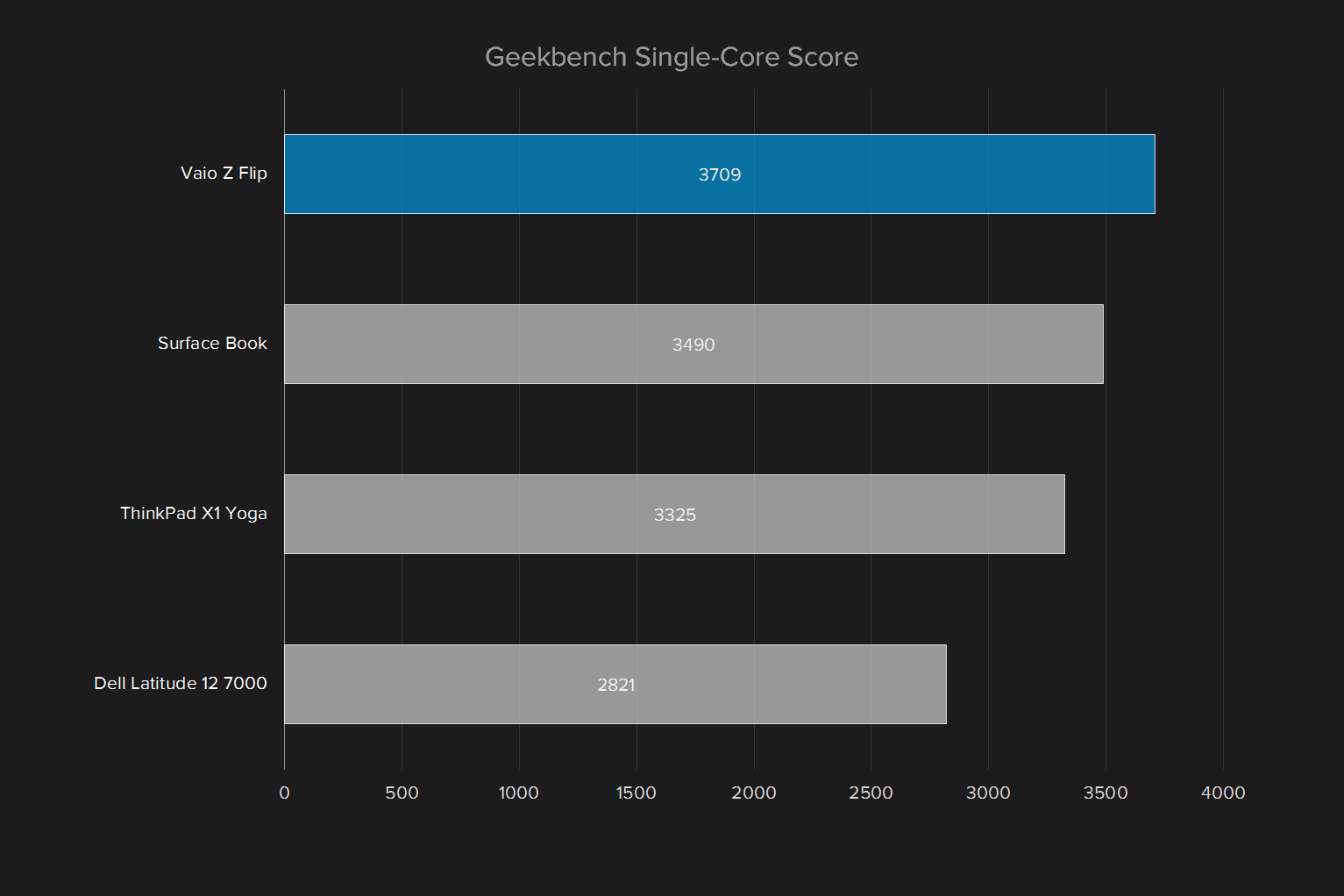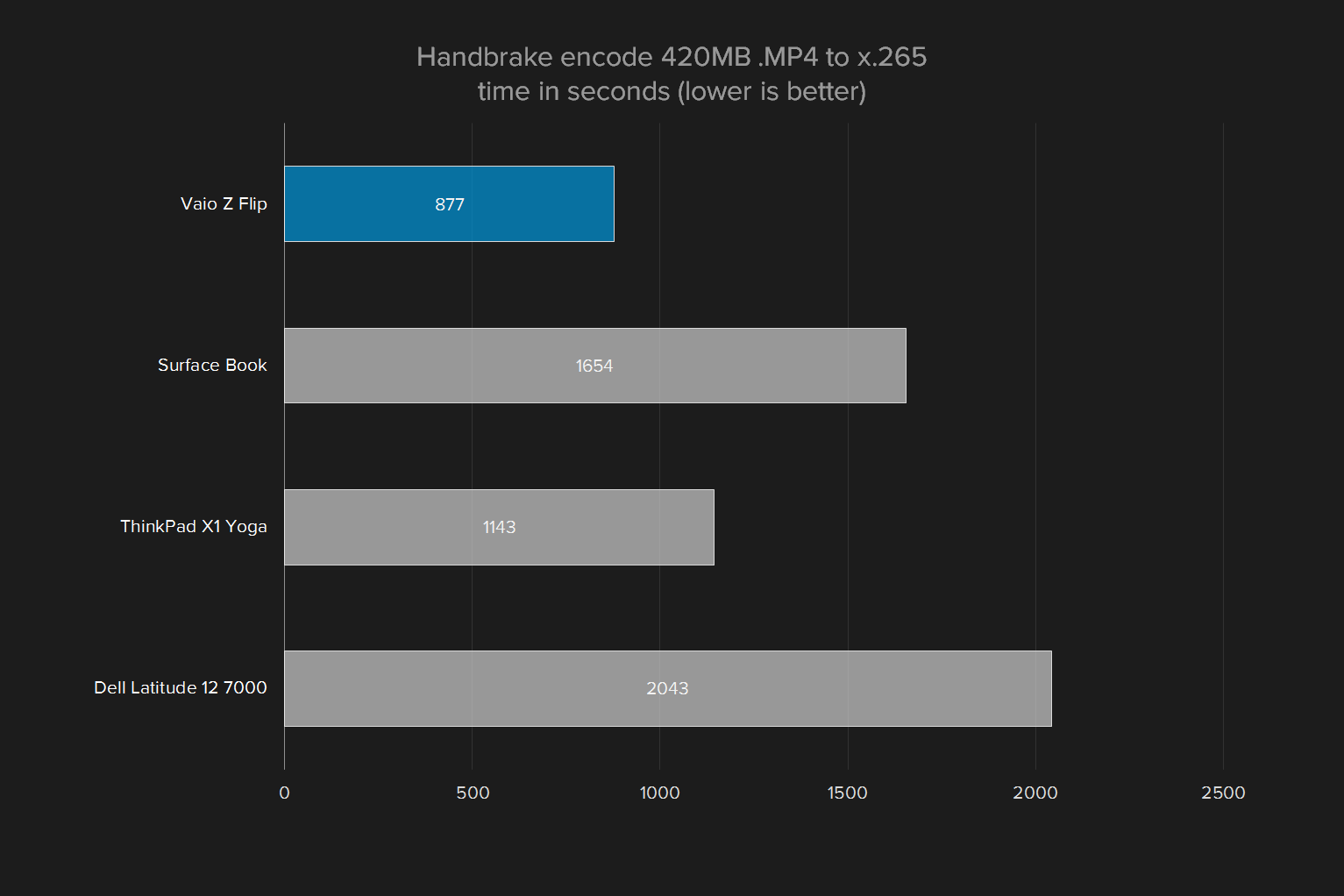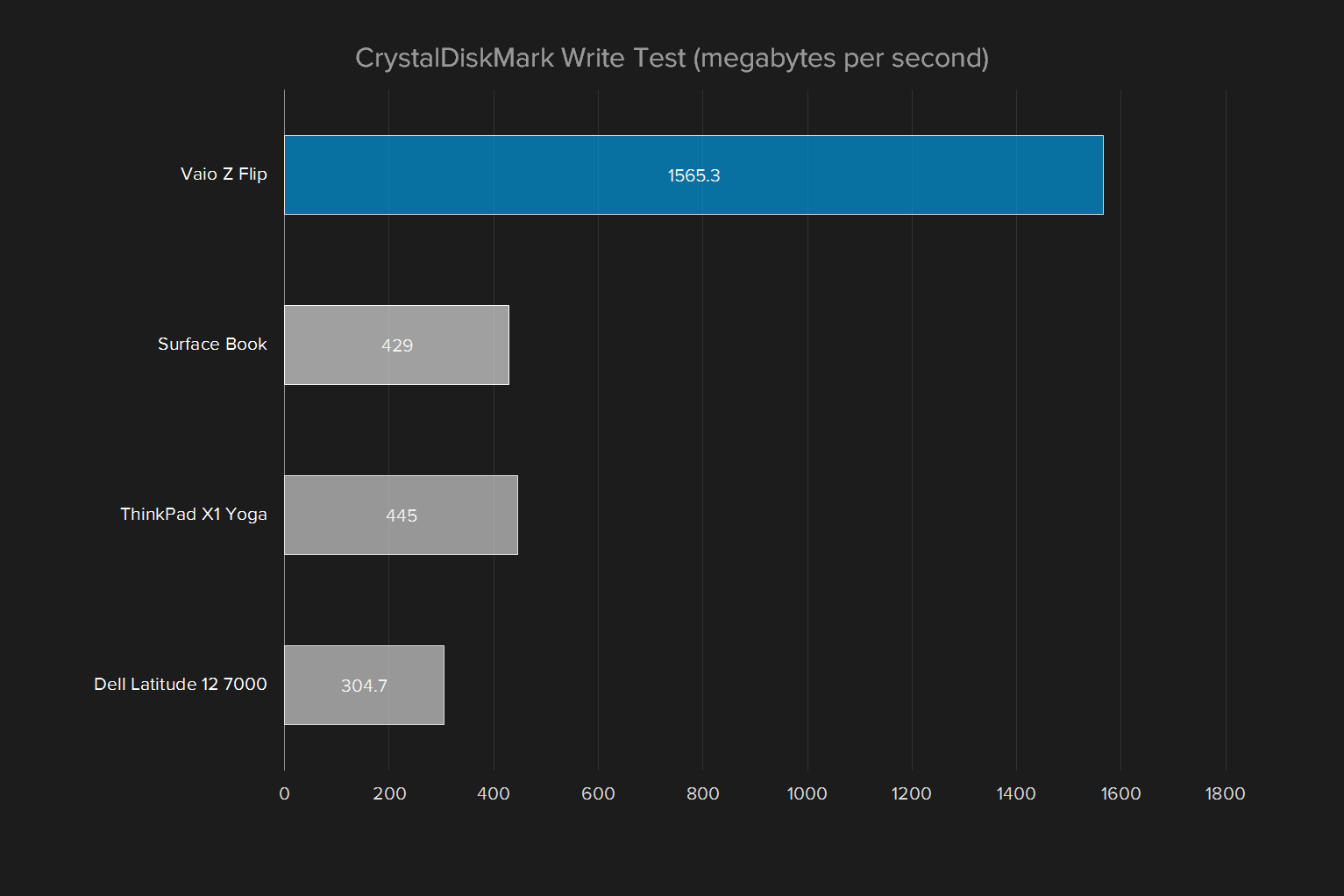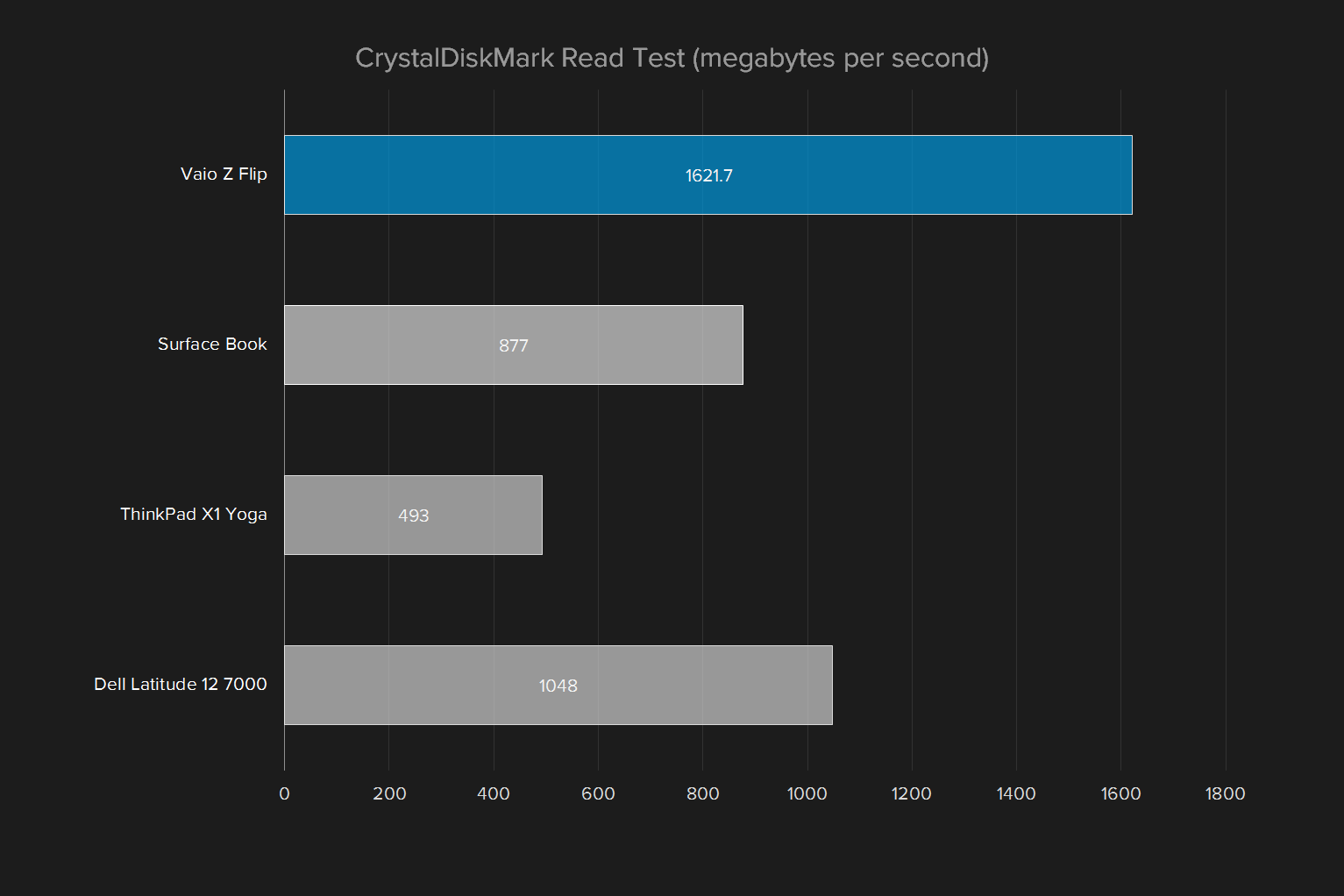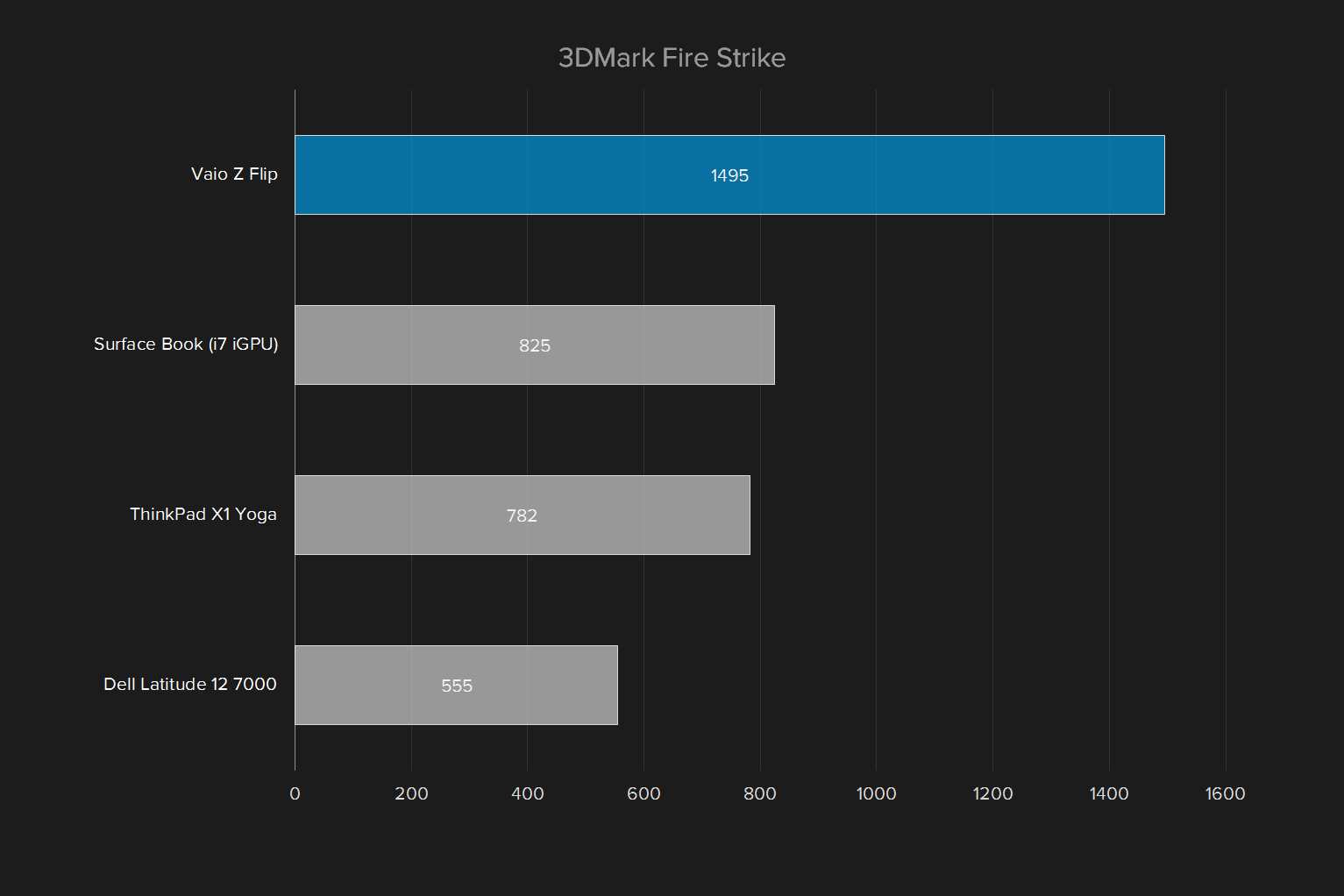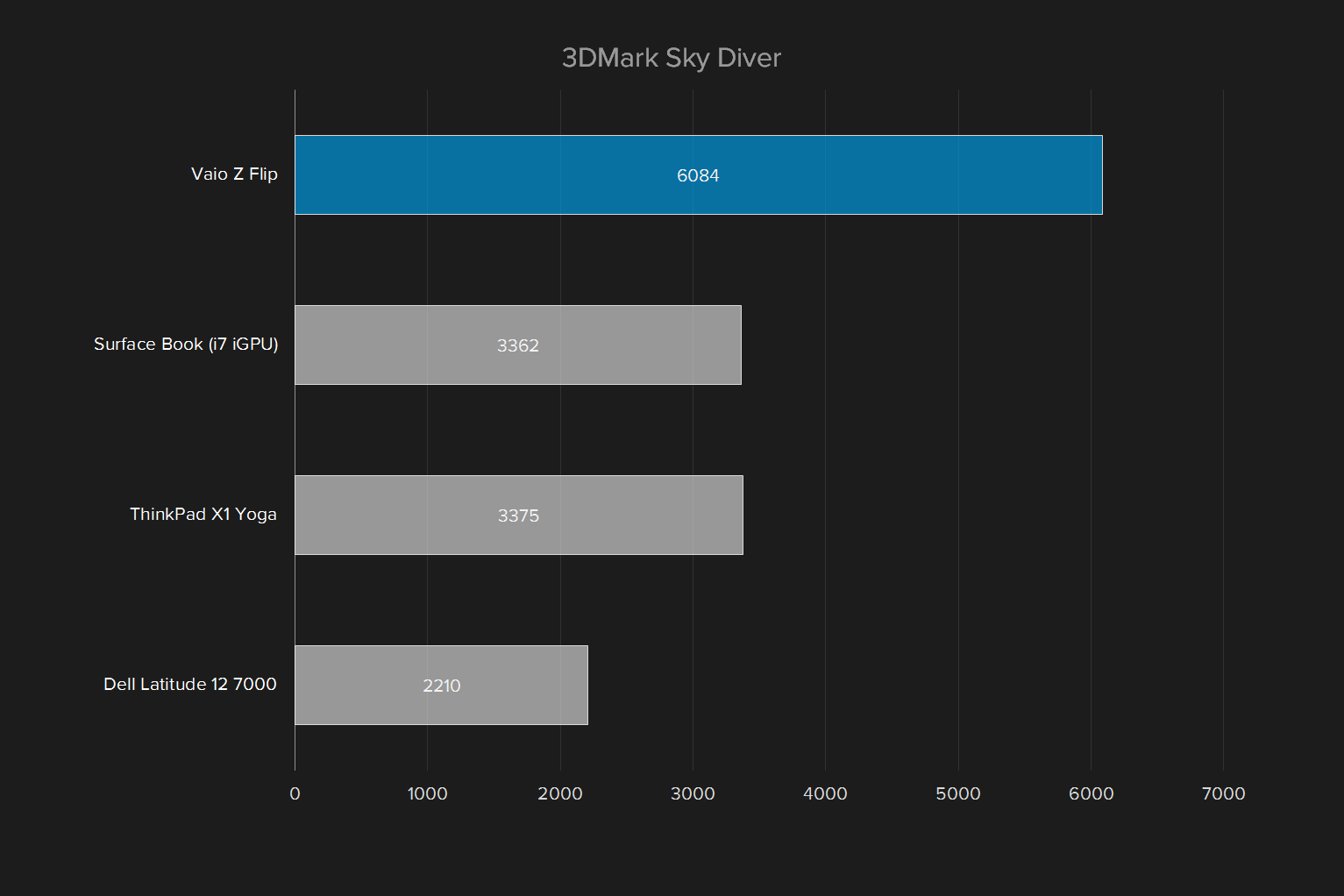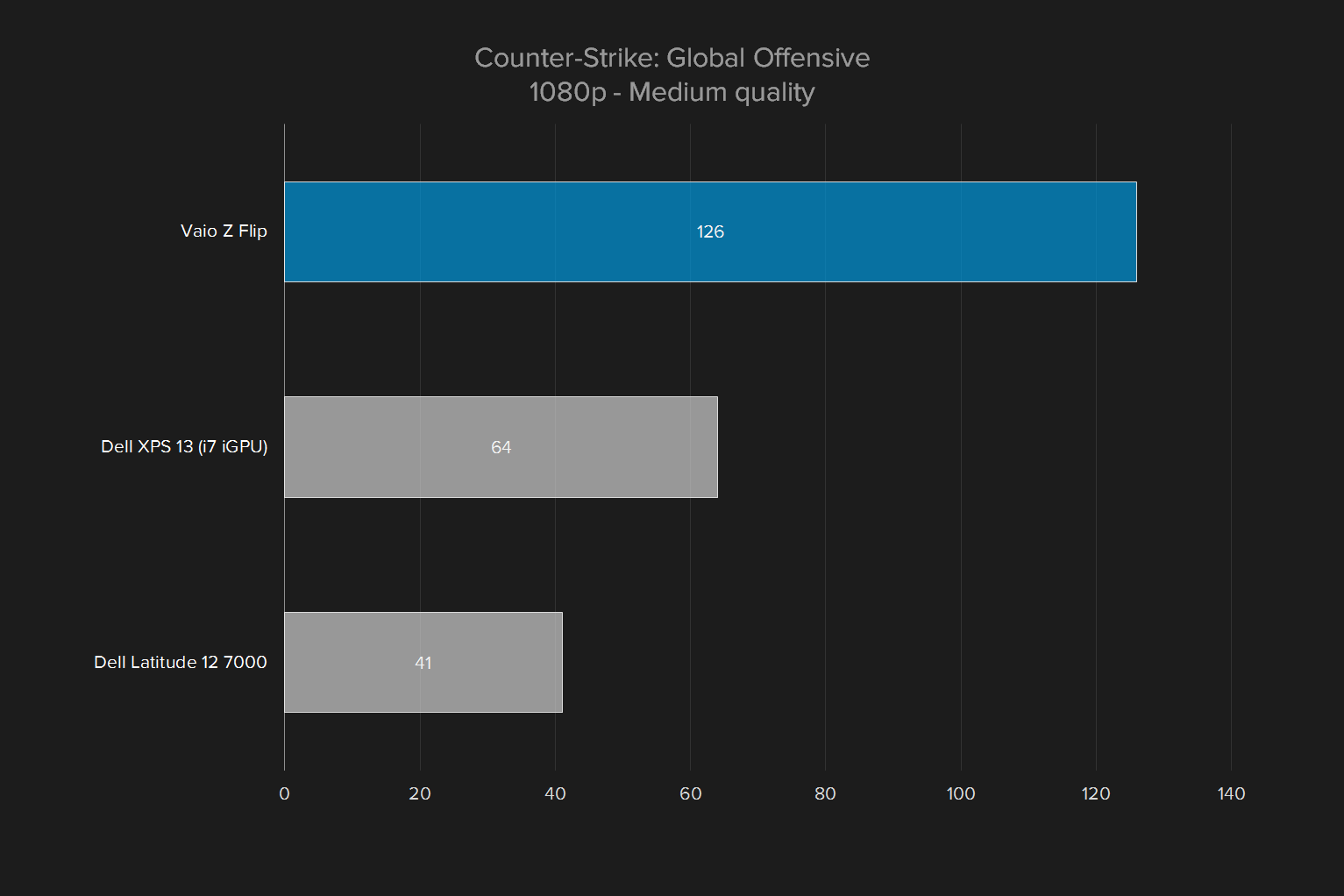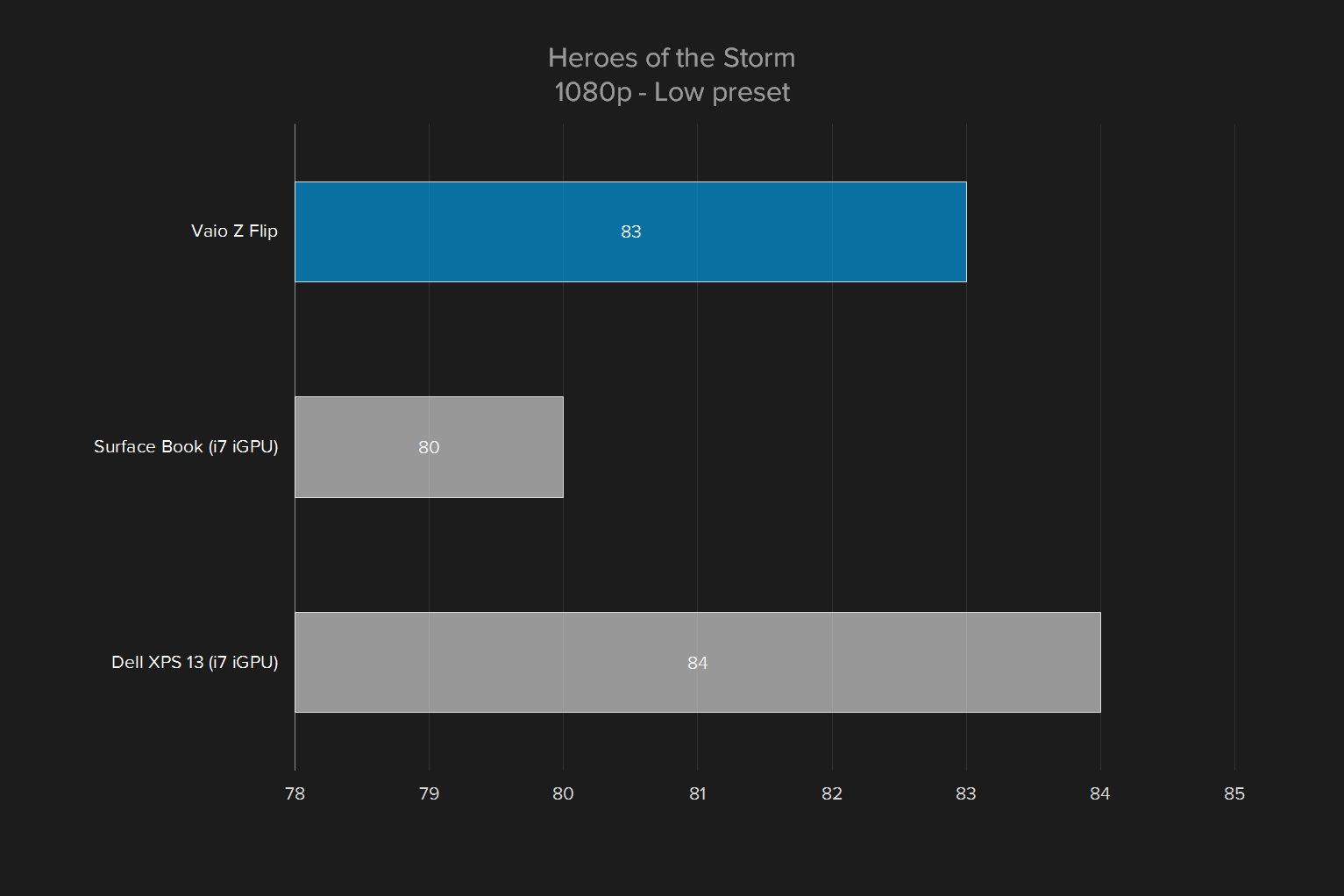- Gorgeous display
- Powerful speakers
- Impressive performance
- Best-in-class SSD
- Can play most modern games
- Unintuitive design
- Limited tablet appeal
- Modest battery life
- Runs hot and loud at load
Once upon a time, Sony’s Vaio computers were the brand to beat. Whether it was high-resolution CRT monitors, slim laptops, or powerful consumer desktops, it was hard to find a reason not to buy Vaio.
But those days passed, and Sony eventually sold off its consumer PC division. Now, Vaio is its own brand, and it will have to define itself in new ways. One of those is by jumping into the hybrid market with the Z Flip.
There are a lot of 2-in-1 computers available now, including headliners like the Microsoft Surface Pro 4 and Lenovo ThinkPad X1 Yoga. The 13-inch Z Flip still manages to stand out, with a 13-inch 1440p screen, and an above-average i7-6567U with a 512GB SSD in our review unit.
Back from the grave, Vaio is setting out to prove it can still compete under new management. Are the wings of change in its favor?
Flip it good
The Z Flip adopts Vaio’s classic styling, but with a dark grey finish for a sleek, modern twist. While it looks sharp, its thin design means some of the panels on the Vaio bend under pressure. The screen in particular is prone to bending, and a soft spot at the top of the keyboard dips as well, taking the whole keyboard with it.
While it’s certainly a 2-in-1, the Vaio’s transforming method is unorthodox for the category. A physical switch at the top of the keyboard releases the display at the bottom. This allows it to swivel freely on a fulcrum point halfway up. From there, it can flip back so the keyboard is behind it, close partway and stand up like an easel, or close completely into a tablet. There’s a slight lip in tablet mode along the side, but I didn’t find it was in the way often.
The design is as eye-catching as it is unique, but limits the system’s potential as a tablet. The keyboard doesn’t detach; it just flips under the screen. That means, even in tablet mode, it’s much thicker and heavier than 2-in-1s with a detachable tablet. If a detachable tablet is a priority, Vaio also makes a similar system called the Z Canvas, which separates from the keyboard entirely.
Still, there are a lot of very poorly designed 2-in-1s out there, like the Acer Aspire 10 E. The Vaio avoids that fate. It’s just not as elegant as the Surface Book.
Plugs and power
Up the right side, users will find two USB 3.0 SuperSpeed ports, one of which is equipped with always-on power, and a tiny power button tucked at the far edge which, despite its size, we’re quite prone to pushing accidentally. On the left side, there’s a full-sized SD card slot, an HDMI port, and a power port that requires a bit more explanation.
Like Apple’s MagSafe power connection, or Microsoft’s Surface plug, the Vaio’s power plug is designed to pop out of the socket if someone trips over the cable. Instead of magnets, it relies on tensioned rings, and a plug that fits loosely in the socket. It works as intended, in that tripping over the cord will only pull the laptop a couple of inches before it pops out, but it sits loosely in the socket, and at the wrong angle won’t charge at all.
That’s a robust set of connections for the category. It’s almost the same as what’s offered on the Surface Book, which opts for Mini-DisplayPort instead. It’s also a bit more robust than other dedicated 2-in-1s like the Dell Latitude 12 7000 or Surface Pro 4, which lack dedicated video outputs, apart from USB Type-C on the Dell.
Have keyboard, won’t travel
Slim size means a short keyboard, and the Vaio is no exception. The keys aren’t the most uncomfortable I’ve used, but they’re far from luxurious. The layout is spacious enough, without the narrow backspace and enter keys we often see on 2-in-1 keyboards. Instead, key travel suffers, as keys thunk sharply against the chassis. Travel is a strong point for the Surface Book, and we prefer that typing experience strongly.
The Z Flip has a built-in keyboard backlight, but there’s no brightness setting, or even a keyboard shortcut to turn it on and off. Instead, the Vaio Control Panel includes settings for always on, always off, or turn on when a key is pressed. It puts out a modest effort at lighting the keys, but a lot of light is lost from backlight bleed around the edges of keys, especially from the keys at the top of keyboard.
It might seem like a trivial complaint, but Vaio doesn’t include anywhere to store the system’s digital pen. More and more, we’re seeing fabric loops or magnetic slots for styli, and it’s a nice touch that means you won’t accidentally lose an expensive peripheral.
Not that it’s a groundbreaking experience, anyway. The Vaio’s digitizer stylus has some odd design features, like a small plastic ring near the tip that keeps me from holding it right where I’d like, and the two small buttons are positioned so they aren’t easily reached while writing. It works as accurately as the Surface Book, although I did find the Vaio was less discerning when it came to identifying my hand versus the stylus.
Lights and music
The first thing most users will notice about the Vaio’s display is how glossy and reflective it is. In a bright room, it’s shiny enough to see objects and people clearly, but the problem is largely solved when it’s dark. For a more technical breakdown of the displays highs and lows, we’ll turn once again to our DataColor Spyder.
Contrast is a high point for the shiny screen, reaching 790:1 at full brightness. That’s a very good score for monitors in general, but not as strong in comparison to other 2-in-1s. Both the Surface Pro 4 and Surface Book clobber it, easily breaking 1,000:1, and Dell’s more budget-friendly Latitude 12 7000 reaches 970:1.
The Vaio does well partially thanks to its maximum brightness of 299 lux, although that’s a strong category for 2-in-1s, where only the X1 Yoga has a lower rating. Both the Surface Book and Latitude 12 break 350 lux, and the Surface Book in particular has one of the best laptop displays out there.
It’s a colorful display too, boasting 94 percent sRGB and 73 percent of the AdobeRGB standard. Both are competitive values, right in the same ballpark as the X1 Yoga, Dell, and Surface book. The sRGB gamut could be a little higher, as the Yoga hits 97 percent, but the Vaio’s result is good enough.
The little pair of drivers pump out a lot of sound.
Color accuracy is strong at a 1.38 rating, where any score under one is generally considered undetectable by the human eye. That’s not uncommon for the category, with the three comparison systems falling between 2.01 and 1.05. The overall average is just over two. Colors generally look realistic – in our viewing, nothing stood out as obviously incorrect.
The speakers are equally impressive. Despite their small size and seemingly poor location underneath the sides of the computer, the little pair of drivers pump out a lot of sound, more than enough to fill the room without even reaching maximum volume. Bass isn’t a strong point, but it’s better than other 2-in-1s at the same size.
On the whole, watching (or playing) anything is a pleasure on the 13-inch display. As long as the room is dark enough to tame the glossy display coat, you’ll appreciate the deep black levels, vivid color, and the 1440p display’s high pixel density. You can even flip the hinge back to push the screen forward, turning the 2-in-1 into a portable movie theater.
Speeding along
The Vaio doesn’t skimp on performance. Even the base model is powered by an Core i5-6267U, but our model, the top configuration, packs in a Core i7-6567U. This dual-core processor boasts a 3.3GHz base clock, a 3.6GHz Turbo Boost, and Hyper-Threading.
It delivers, outpacing its competitors easily, including the Core i7 Surface Book. That’s not just one test, either. The Vaio hits top marks in H.265 4K video conversion, 7-Zip compression and decompression, and the GeekBench synthetic benchmark.
You can feel that speed in everyday use, too. Some 2-in-1s suffer from low overall system power, resulting in sluggishness when web browser tabs start to pile up. The Vaio doesn’t meet the same fate, speeding along happily without getting bogged down by the stresses of modern computing. And the CPU isn’t the only high-end component under the Vaio’s hood.
The best SSD around
Vaio offers a choice of 256 or 512GB SSDs in the Z Flip, both PCIe SSDs. The base i5 model includes the 256GB version, while a $400 bump on the mid-tier i7 model doubles the SSD size to 512GB, and doubles the memory to 16GB.
Either way, the drive inside will be an NVMe Samsung SM951, which we’re very familiar with at the Digital Trends office. It’s often found in high-end laptops and gaming desktops, and its presence here is no surprise, given the Vaio’s price.
What is a surprise are the shockingly fast speeds the drive reaches, even in comparison to other systems with the same drive and more powerful hardware. Both read and write speeds blow right past every other 2-in-1 we’ve tested.
You can feel the speed. Even folders stocked full of videos and images open without delay, and the system boots in seconds flat. Combine that with the speedy CPU, and the only thing holding this back from gaming properly is the internal graphics processor. Or is it?
Surprise! It can game
This is the first system we’ve spent time with that has Intel Iris Graphics 550 in it, so we’ll be putting it through the ringer to see how it runs out suite of low-end test games. Before we can do that, we’re going to use the 3DMark synthetic benchmark to see how it stacks up against its competitors in a vacuum.
The Iris Graphics 550 massively outpaces the integrated chips found in the comparable systems, to say the least. It comes close to doubling the HD 520 in the i7 Surface Book, and triples the HD 515 in the Dell Latitude 12. In fact, it’s one of the best scores we’ve ever seen an integrated GPU produce, and that gives us a lot of hope for its gaming potential.
The Vaio pulls off playable framerates in both of our basic test games, at least with the graphical settings turned down. It pushes well past 60 frames per second in both Heroes of the Storm and Counter-Strike: Global Offensive, which we usually consider an ideal framerate. It didn’t perform all that much better than the i7 Surface Book, but trashes most other 2-in-1s, particularly the Core M toting Dell Latitude 12.
Normally we wouldn’t task a laptop with an IGP with running games at anything over 1080p, even when it’s the laptop’s native resolution. We made an exception here just for kicks, and we found surprisingly solid performance, even at the screen’s native 1440p. Counter Strike: GO held an 85 frame per second average on our medium settings, without dropping below 67. The fact that it’s smooth at 2,560 x 1,440 is impressive. The 550 might just be the first Intel IGP to holds its own in modern games.
Take it with you, bring the charger
All that power has a price, though, and part of the cost is reduced battery life. The Vaio lasted about four and half hours in our Web browsing loop before succumbing to exhaustion. That’s a decent, but ultimately unsatisfying score. The Surface Book reaches almost seven hours without a charge, a leader in the category. The X1 Yoga is right in the same ballpark as the Vaio, and the Dell falls just under four hours thanks to its small battery.
While that might feel short at first glance, it’s fairly standard for the category. The thinner the 2-in-1, the less room for a battery, and some devices suffer more noticeably than the Vaio. Dell’s Latitude 12 uses a much slower Core M processor, and has a lower display resolution, but doesn’t even reach four hours in our tests. The Surface Book pushes seven hours, but that’s partially thanks to the extra battery built into the computer’s keyboard.
It’s hard to complain about the Vaio’s physical size. It’s thinner than the Surface Book, and just barely larger than a 13-inch MacBook Pro, but with much, much more powerful hardware, and a touchscreen to boot. It’s even a bit slimmer than the Surface Book, mostly thanks to the Surface’s dynamic fulcrum hinge, which leaves a gap between the screen and keyboard when shut.
Hot enough for ya?
While the power options in Windows 10 are limited to a single balanced profile, in the Vaio control panel we found two options for power management — Performance or Silent. It’s a good thing there’s a way to turn down the volume, because the Vaio sounds like it’s about to achieve lift off when faced with a heavy load.
It’s so noisy that while running tests, colleagues noted that they could hear the fan running from across the editorial bullpen. Under load, the Vaio reached a powerful 52 decibels, which is more in line with gaming desktops like the MainGear X-Cube than with other 2-in-1s.
Despite the fan’s attempts to lift the Vaio off the desk, it doesn’t seem to cool the system that effectively. Parts of the keyboard reached 104 degrees Fahrenheit at the surface, and the underside of the chassis came close to 120 degrees. It’s not going to melt your fingertips, but it might burn the hair off your thighs.
Mild bloatware
While there’s a bit of bloatware to deal with on the Vaio, it’s not nearly as intrusive as the extra bundled software found on a lot of machines.
In fact, all of the software was tucked away neatly in a Start menu folder marked Vaio. There’s some extra software to take advantage of the stylus, shortcut key configurations, a clipping tool for screen capture, and some trial software for scanning documents with the Vaio’s camera.
There’s also a control panel, which unlike some we’ve seen, doesn’t step on your other settings’ toes. It’s mostly Vaio’s alternative to the power control panel. Its settings are limited to lid opening and closing behavior, power button operation, and the choice between “Performance” and “Silent” power modes.
Warranty
Vaio includes a one-year warranty with every Z Flip sold, a standard model for the laptop industry. Users can add another two years to the warranty for an extra $200 on top of the purchase price.
Need for speed
We have to hand it to Vaio. The Z Flip rises from the ashes of the former Sony offshoot like a phoenix, with a blazing fast CPU, best in class SSD performance, and a screen well suited for work or play. But the question remains — are users willing to pay a premium for those benefits?
They may not have to. In fact, our review configuration is $300 less than the i7 Surface Book with a 512GB SSD, although that Surface includes the dedicated GPU. It’s also just $70 more than the comparable ThinkPad X1 Yoga, although Lenovo is currently offering $233 off that price on its site. The Latitude’s highest-end model is $1,549, but it’s powered by a Core M, and only offers 128GB of solid state storage.
Which makes the Vaio a sleeper hit in the 2-in-1 market, as long as its primary use will be in laptop mode. The tablet functionality is occasionally useful, but if you need something that’s more consistent and easy to use in that form factor, the Latitude or Surface Pro are better options. At the same time, all that sets the Vaio apart is speed, and if that’s not a necessity, this might not be the machine for you.





